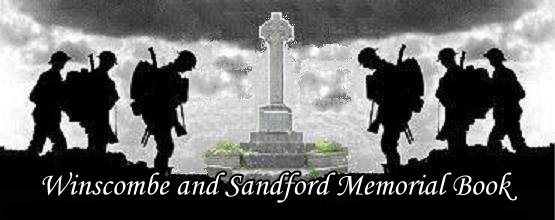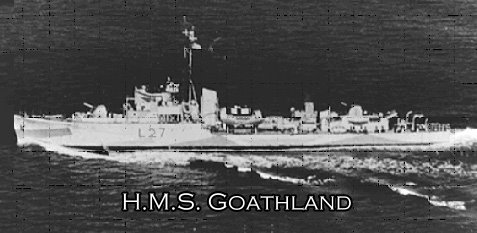
|
|
|||||||||
 |
|||||||||
|
|
|
 |
|
|
Laid down at Govan on the Clyde in January 1941, H.M.S. Goathland was one of 86 “Hunt” class escort destroyers. Of Type III construction she was launched 3rd February 1942 and commissioned in Royal Naval service on 6th November 1942. Primarily designed for close escort work and Channel/Mediterranean patrols, the Type III Hunt class boat had a top speed of 26 knots and a cruising range of 3,500nm at 15 knots. She was lightly armed and intended to deal with air and submarine attack and lighter surface ships. Armed with : 4 x Quick fire 4in Mark XVI guns on two, twin mounts Lieutenant Commander Edward Pumphrey DSO DSC was Captain of H.M.S. Goathland and her compliment of 168 men. Promoted Commander 31st December 1943 he was a fearless leader with a record of daring in his previous commands: The ships 20 month operational life was mainly routine patrol and escort work in the Western Approaches, North Sea, Channel and Mediterranean. However, two actions are notable : 28th April 1943 – Channel Patrol At 02.45 H.M.S. Goathland and another Hunt class Destroyer, H.M.S. Albrighton, and a flotilla of 10 MTB’s made contact with a German convoy of 7 warships escorting an Italian tanker. The action took place at close quarters with the British Destroyers closing, under cover of dark, to within 200 yards of the Germans before attacking using lighter machine guns as well as the ship’s main armament. The fighting carried on until after dawn when both RAF and German planes joined in the battle. Breaking off the engagement the British ships suffered minor damage but the Germans lost 2 warships and the tanker, the rest of the convoy heavily damaged and confined to port for many months. This was a major success for the tactic of close co-operation between both large and small surface vessels and the RAF. 6th June 1944 – Operation Overlord : D-Day Sword Beach stretched 8 km from Ouistreham to Saint-Aubin-sur-Mer and was around 15 km from Caen, the major objective of the assault. The German defences in the area were, in comparison to other landing sites, light - there were beach obstacles, anti-tank ditches, mines, machineguns and mortars at the beaches and across the River Orne at Merville there were heavy guns. The day ended with 28,845 British troops ashore and only 630 casualties. However Caen had not been reached and in the face of stiffening resistance the assault had stalled 6 km short of the town. British forces had been bogged down on the beaches by the sheer volume of men and equipment being unloaded. Goathland’s involvement did not end with her ferrying duties. Unable to provide the information to RAF fighters in support the ground troops from the UK, it was essential to locate effective radar and communication bases close to the Normandy beaches during the critical days from D-Day until mobile land based radar and communication units could take over some weeks later. As a command ship she played a vital communication role not only in the landing operation but also with Fighter Direction Tender 217 – a ship specially equipped with radar and communications equipment to provide the early warning and fighter direction cover over the landing beaches. Final Day : 24th July 1944 Mercifully it seems that she ended her career without any loss of life among her crew, the Commonwealth War Graves Comission having no record of any fatalities for this ship.
|
|